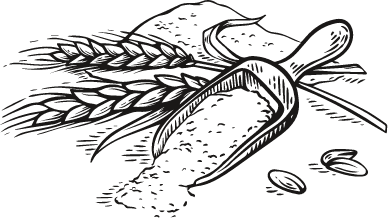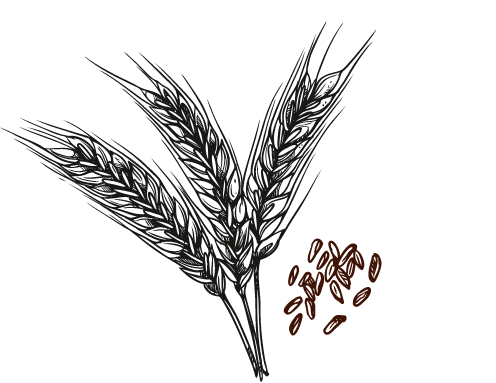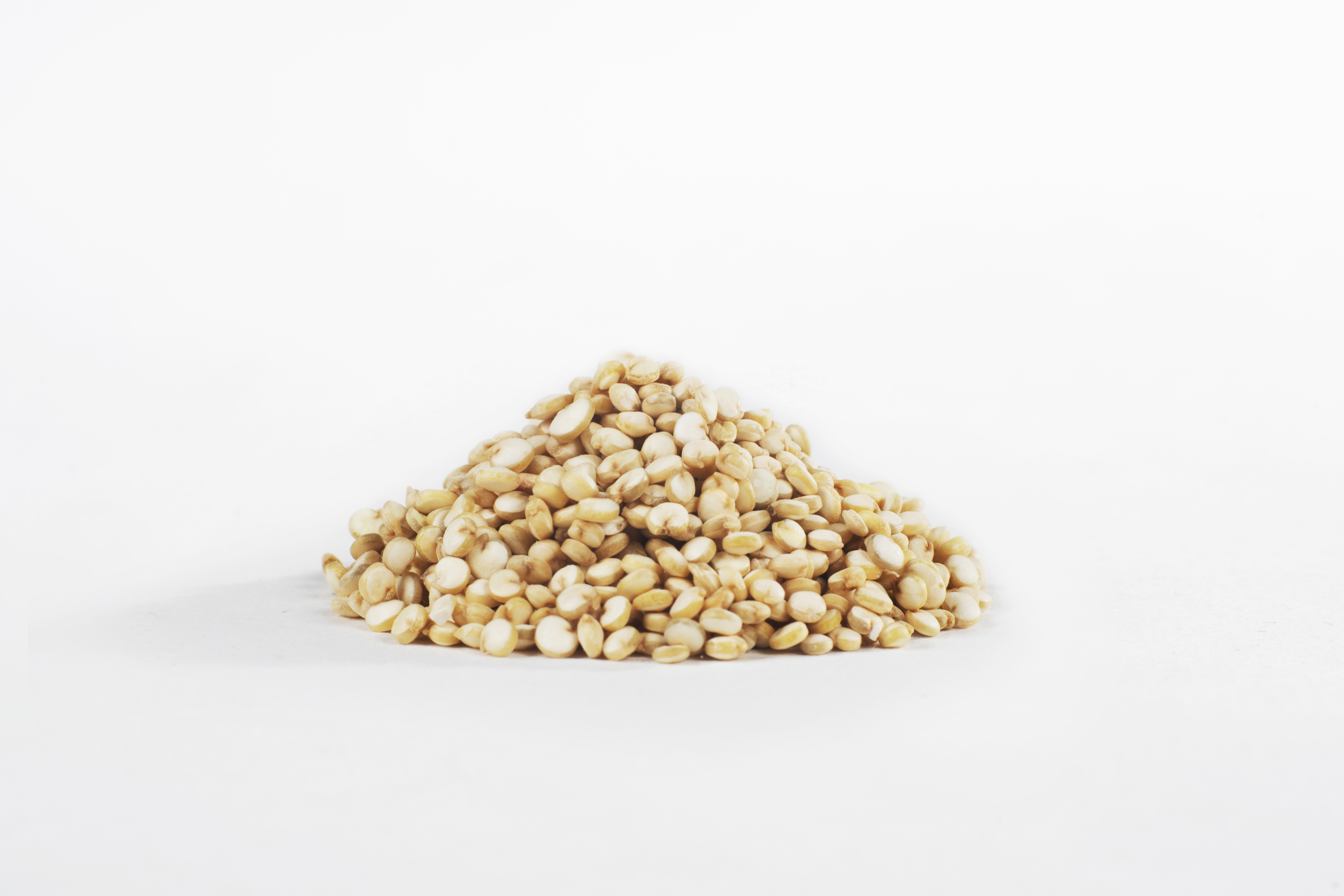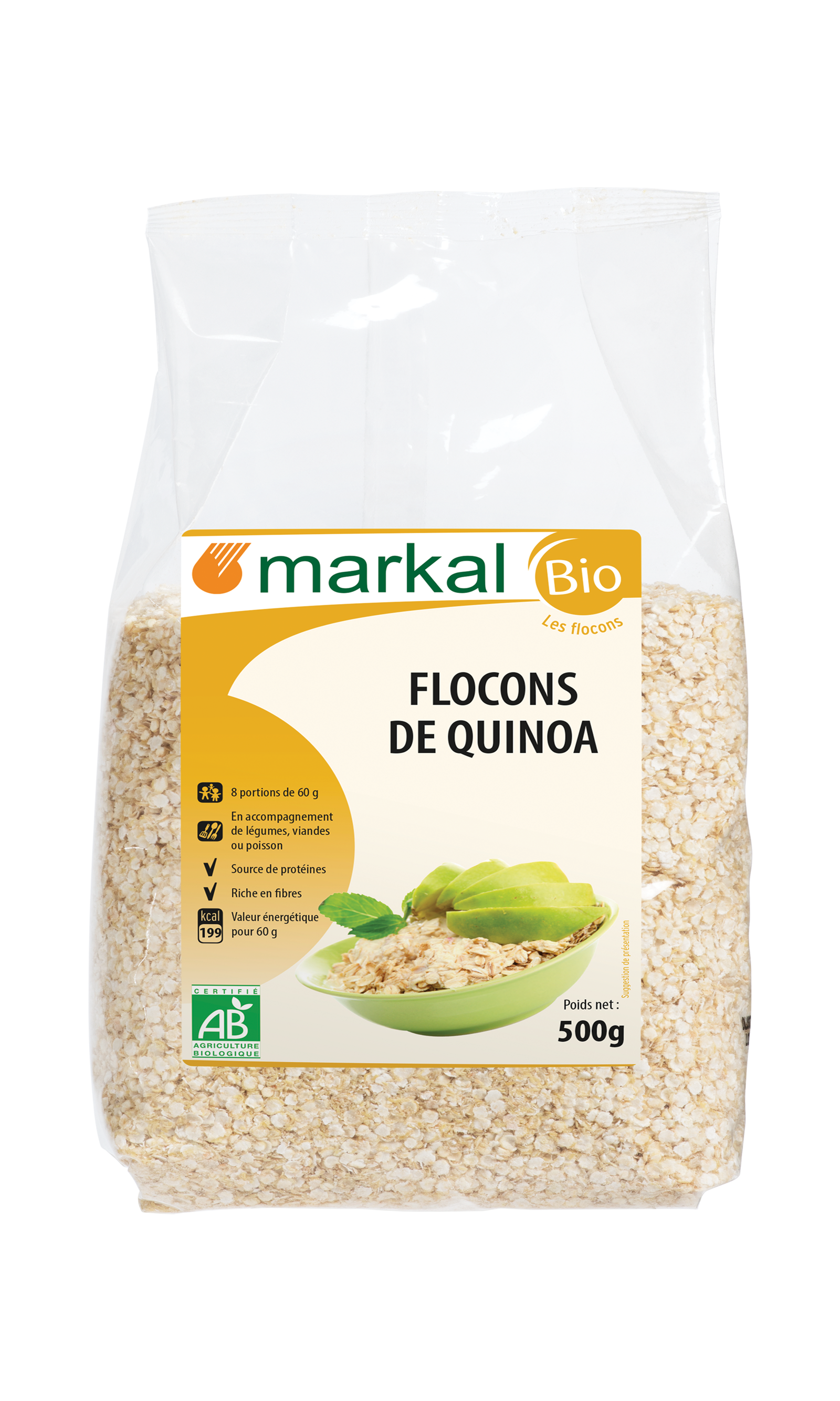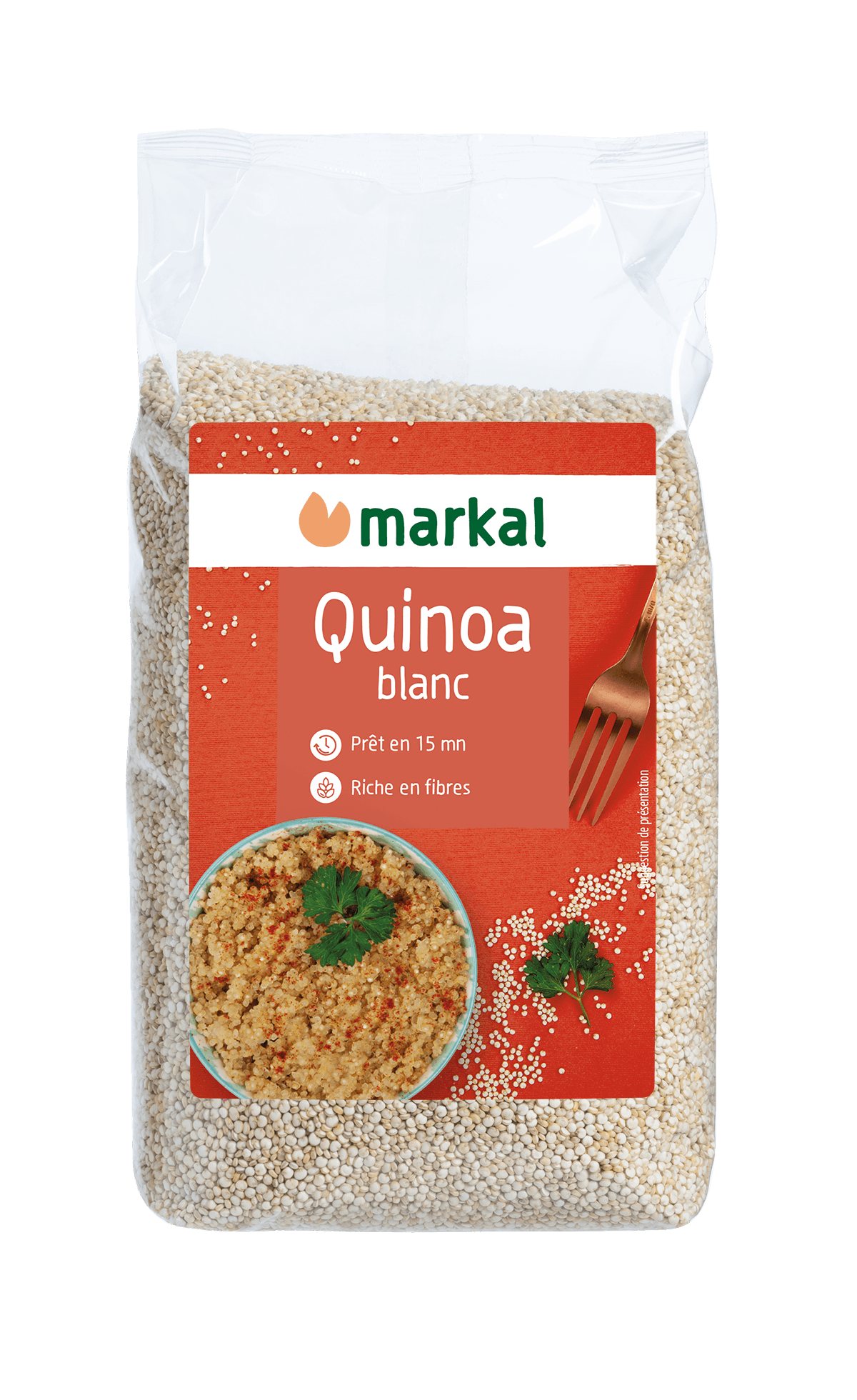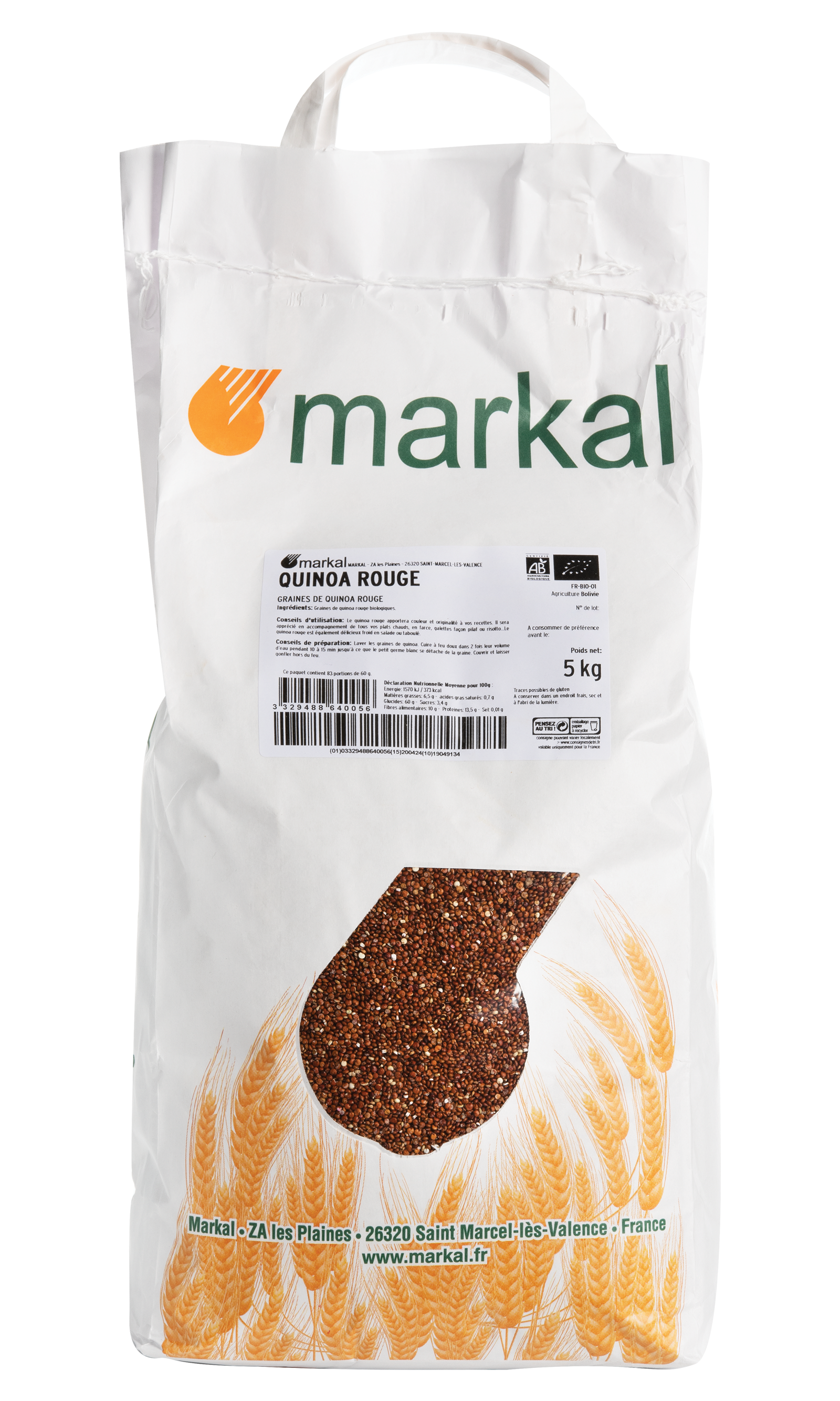Quinoa
History
Growing 4,000 metres above the ground on arid and contrasting soils, this ultra-resistant plant has not convinced the Spanish conquerors, unlike, for example, potatoes. This is due to its bitterness (related to its saponin content) when it is not well rinsed.
Valued for its protein content, naturally gluten-free since the 70s, it is now a bestseller in store.
Portrait
These grains come in black, red and white. Quinoa is suitable for a vegetarian diet. It is eaten both sweet and salty.
Derivatives
Flour, flakes to make patties and porridge, or puffed for appetizers or mixed with breakfast cereal.
Origin
Grown on the Altiplano as early as 4,000 years B.C, quinoa has sacred importance. The Incas called it Chisiya mama, which is "mother cereal". Quinoa has helped to develop pre-Columbian civilizations. Peru and Bolivia, birthplaces remain the world's leading producers, although it is now possible to find them in France : in Anjou.
Usage
Rinse the quinoa. Place 1 volume of quinoa in 2 volumes of water and simmer for 10–15 minutes, until the little white germ detaches from the seed. Cover, remove from the heat and allow to expand. Red quinoa will bring colour and originality to your recipes. Quinoa is great alongside hot meals, in stuffing or veggie burgers, and can be used for pilaf or risotto. It's equally delicious when consumed cold in salads or tabbouleh. Keep in a cool, dry and dark place.




